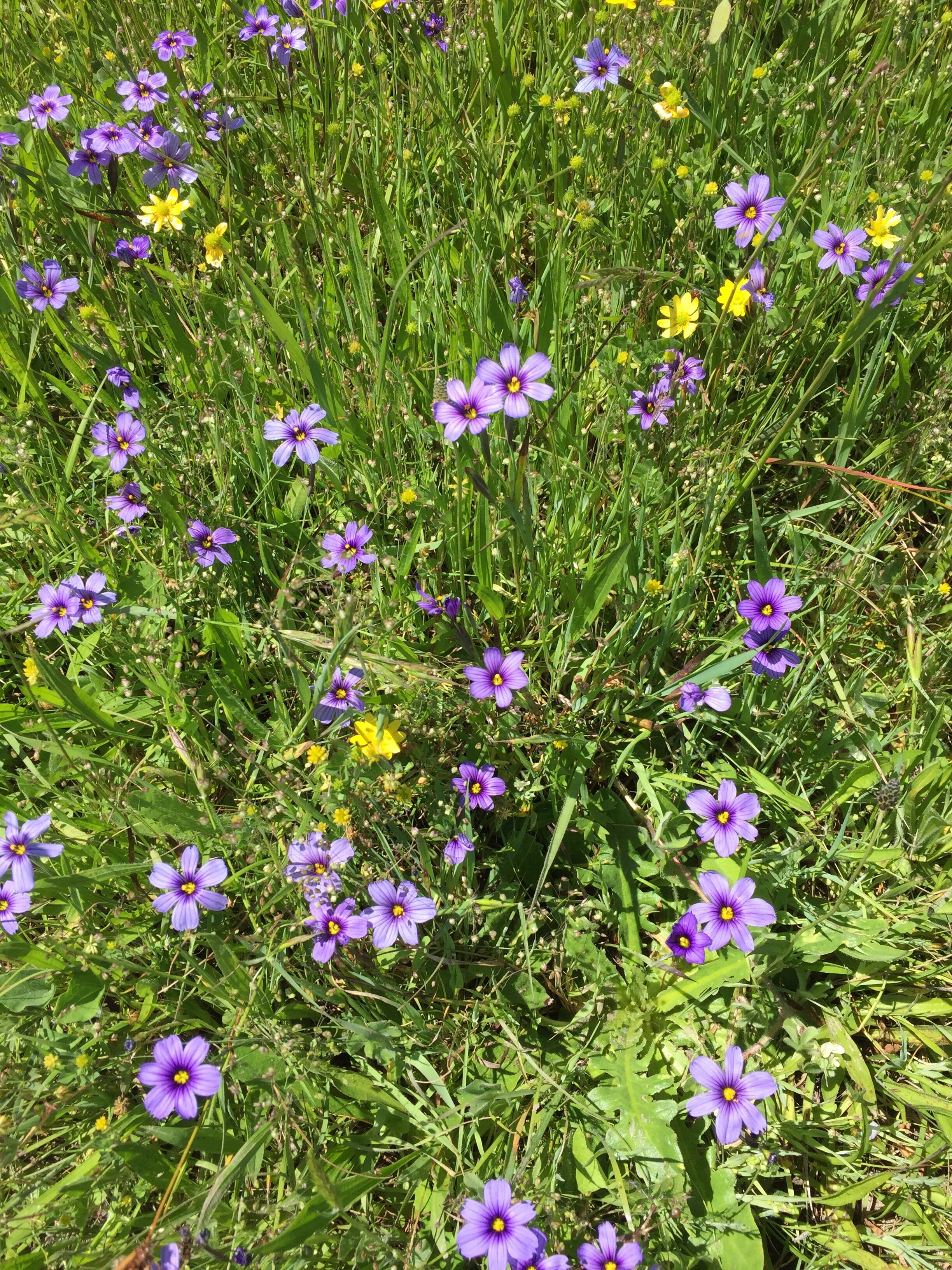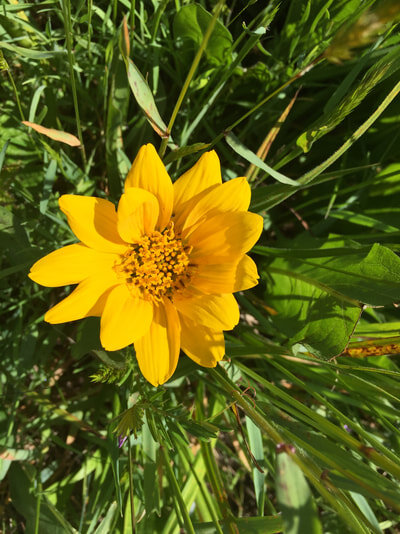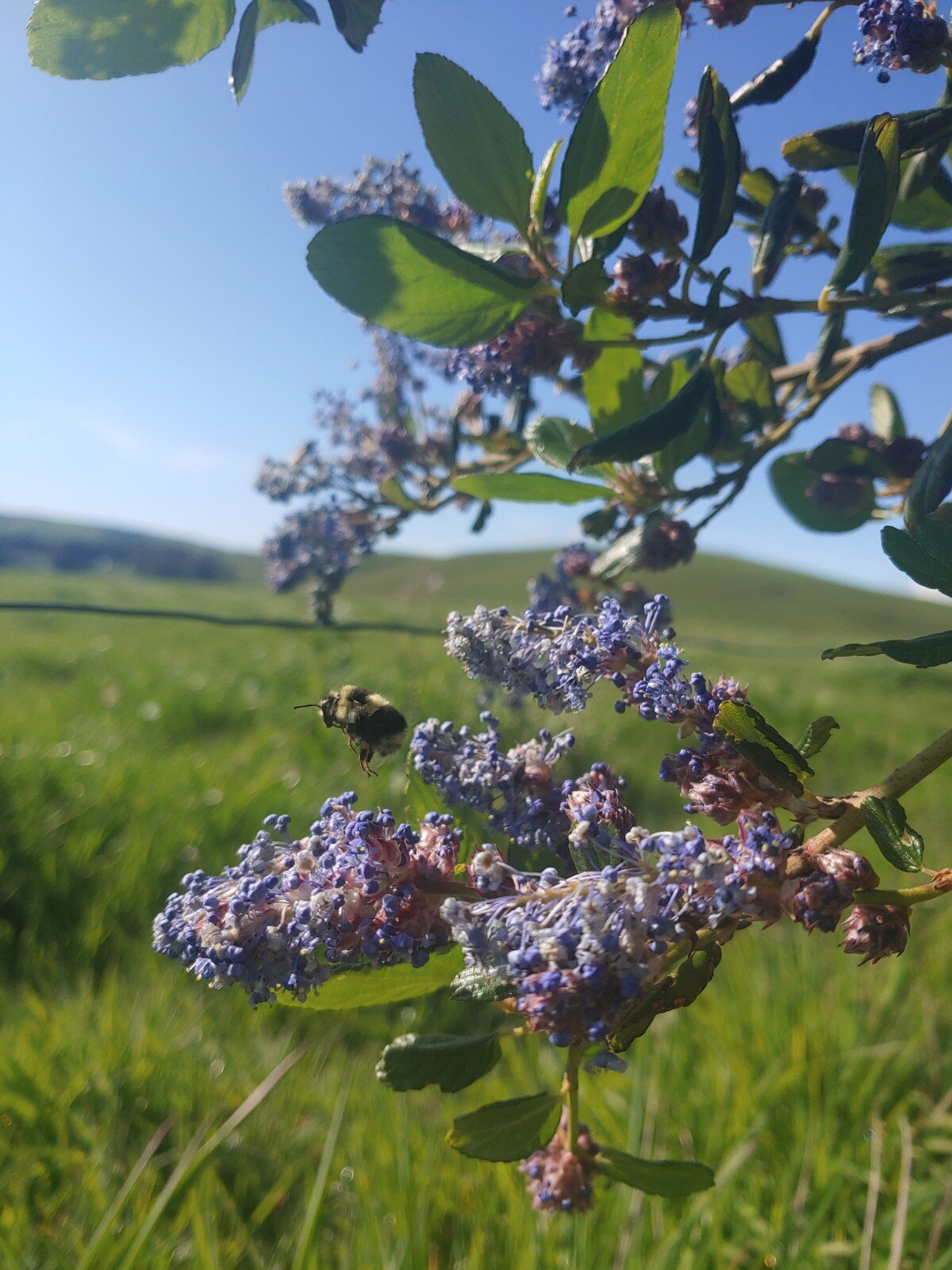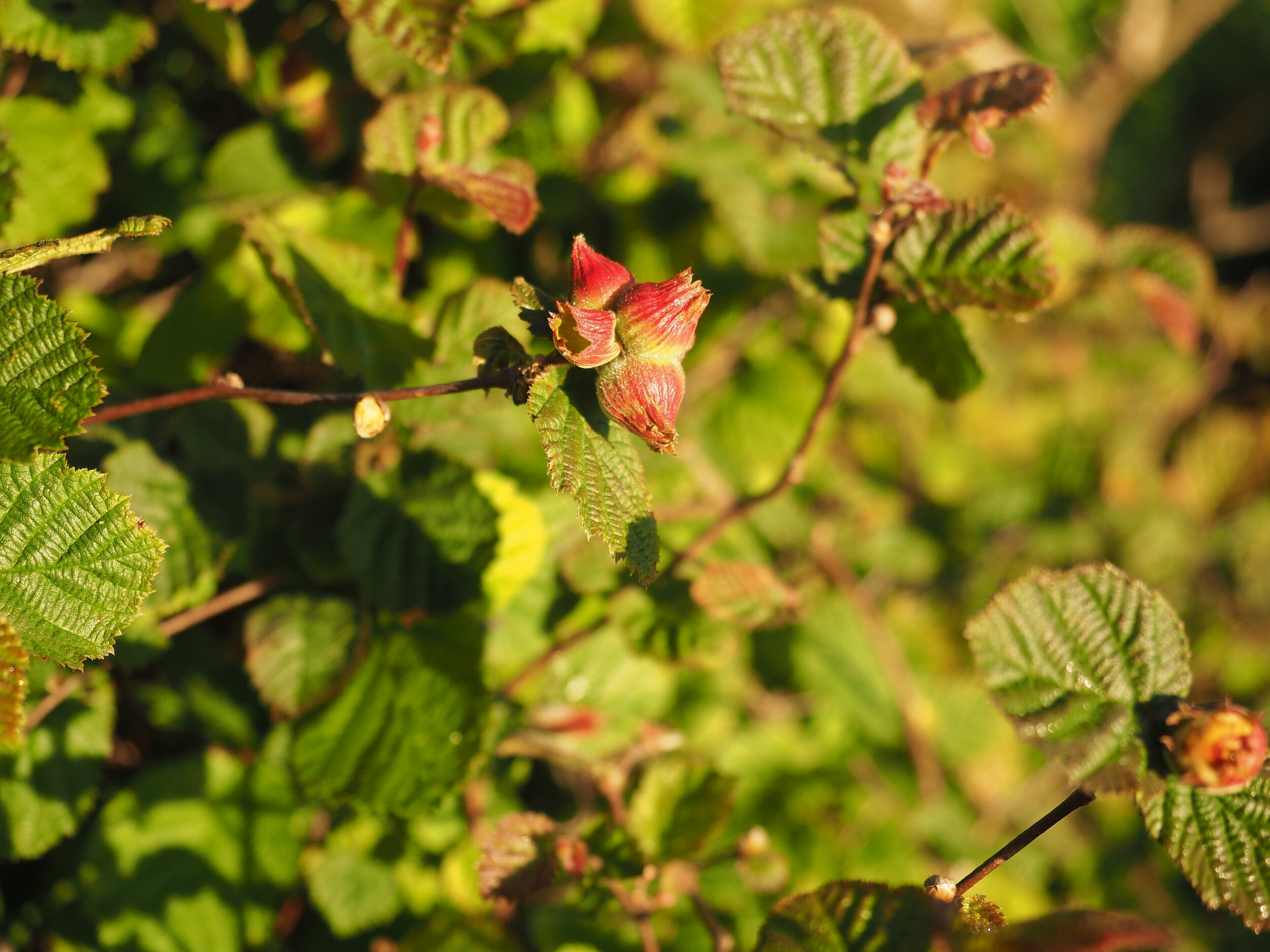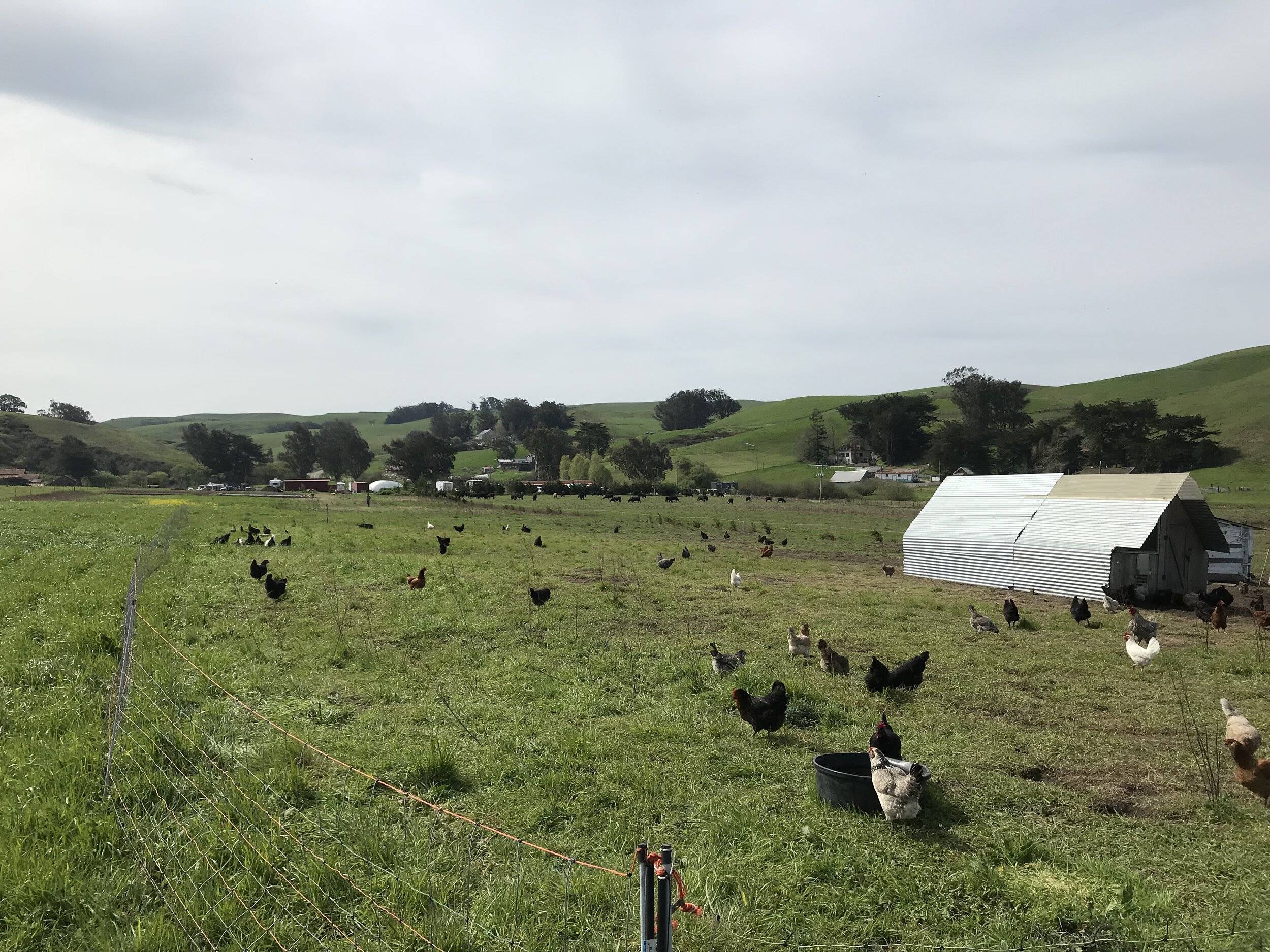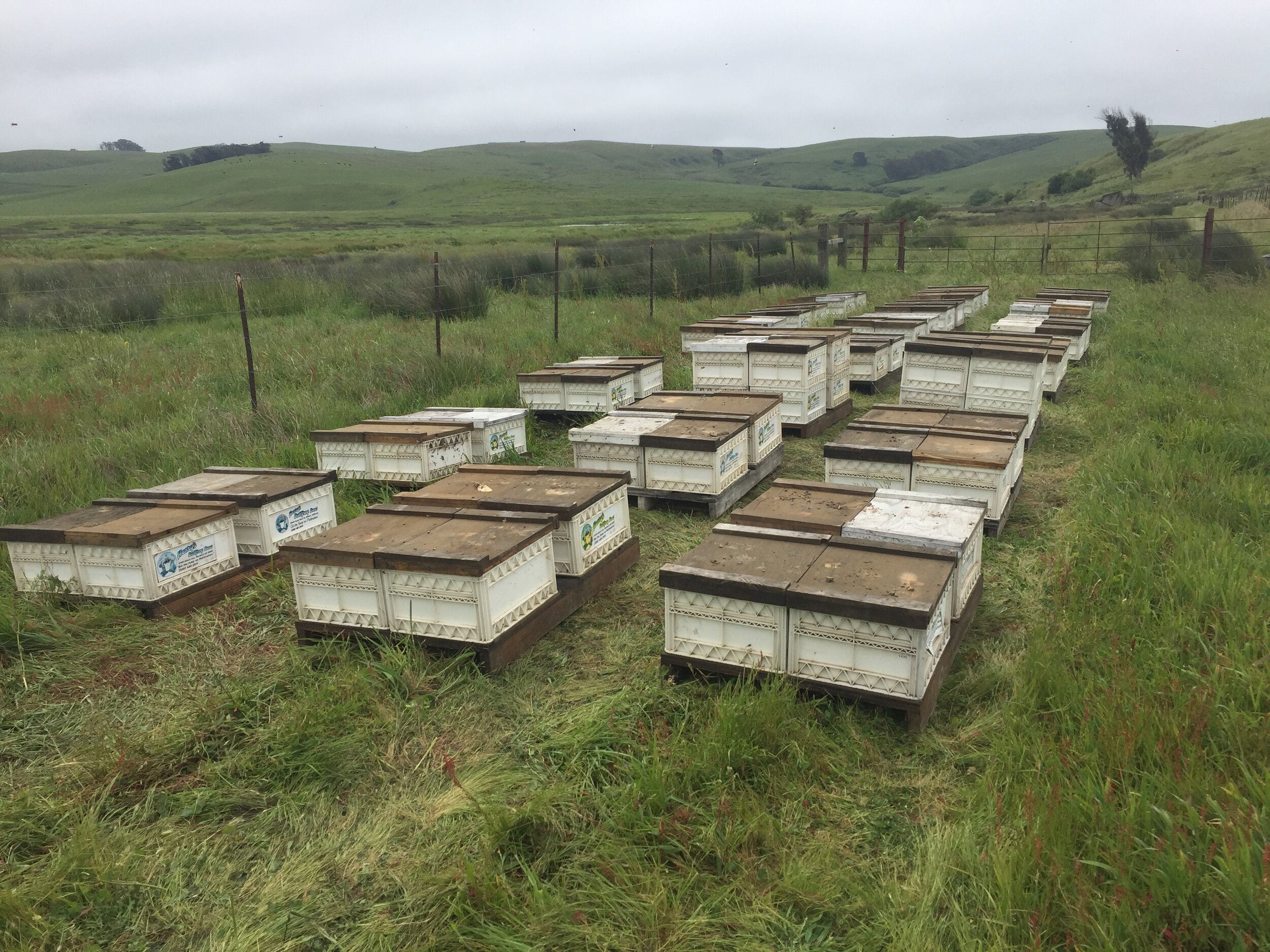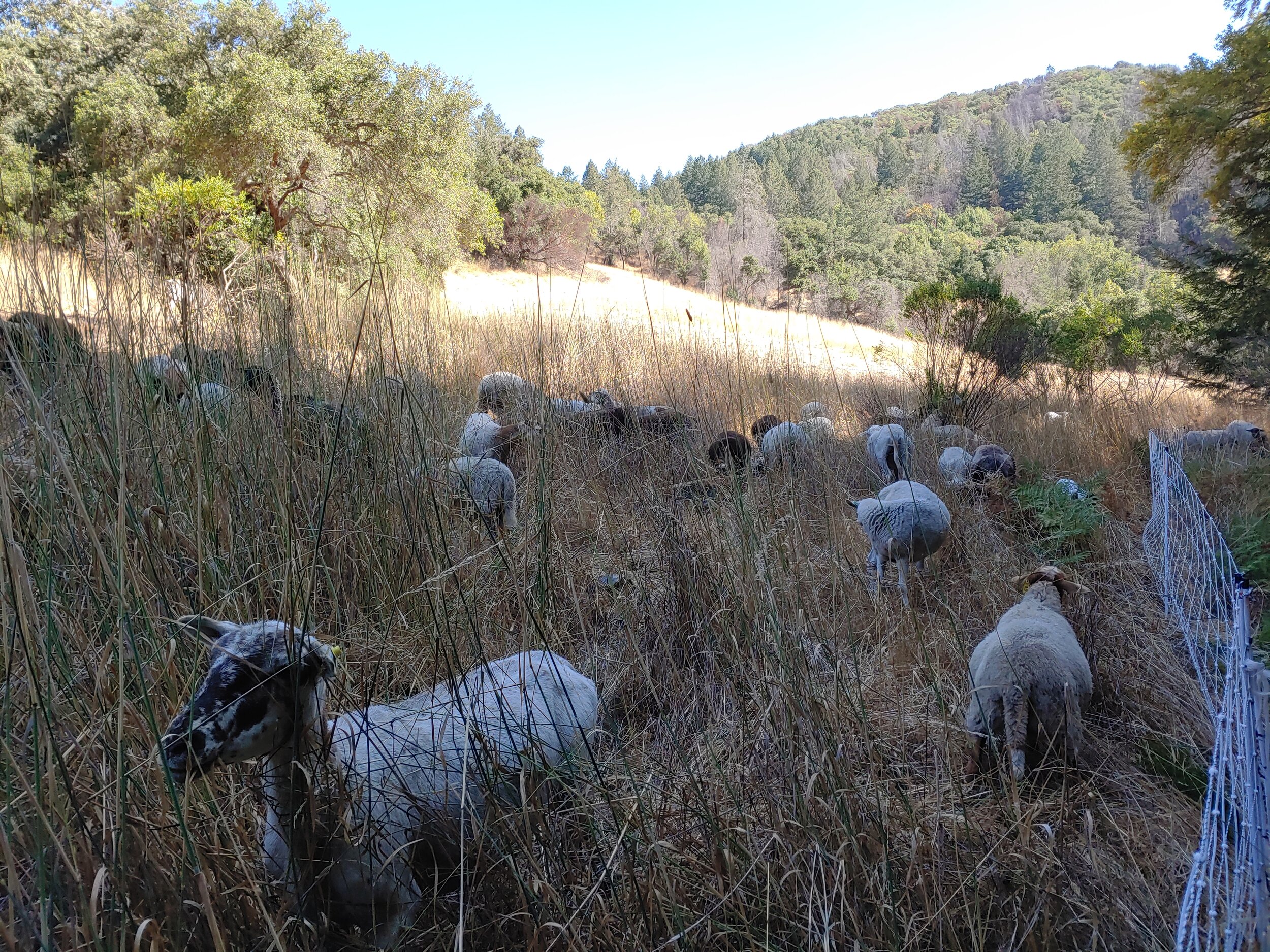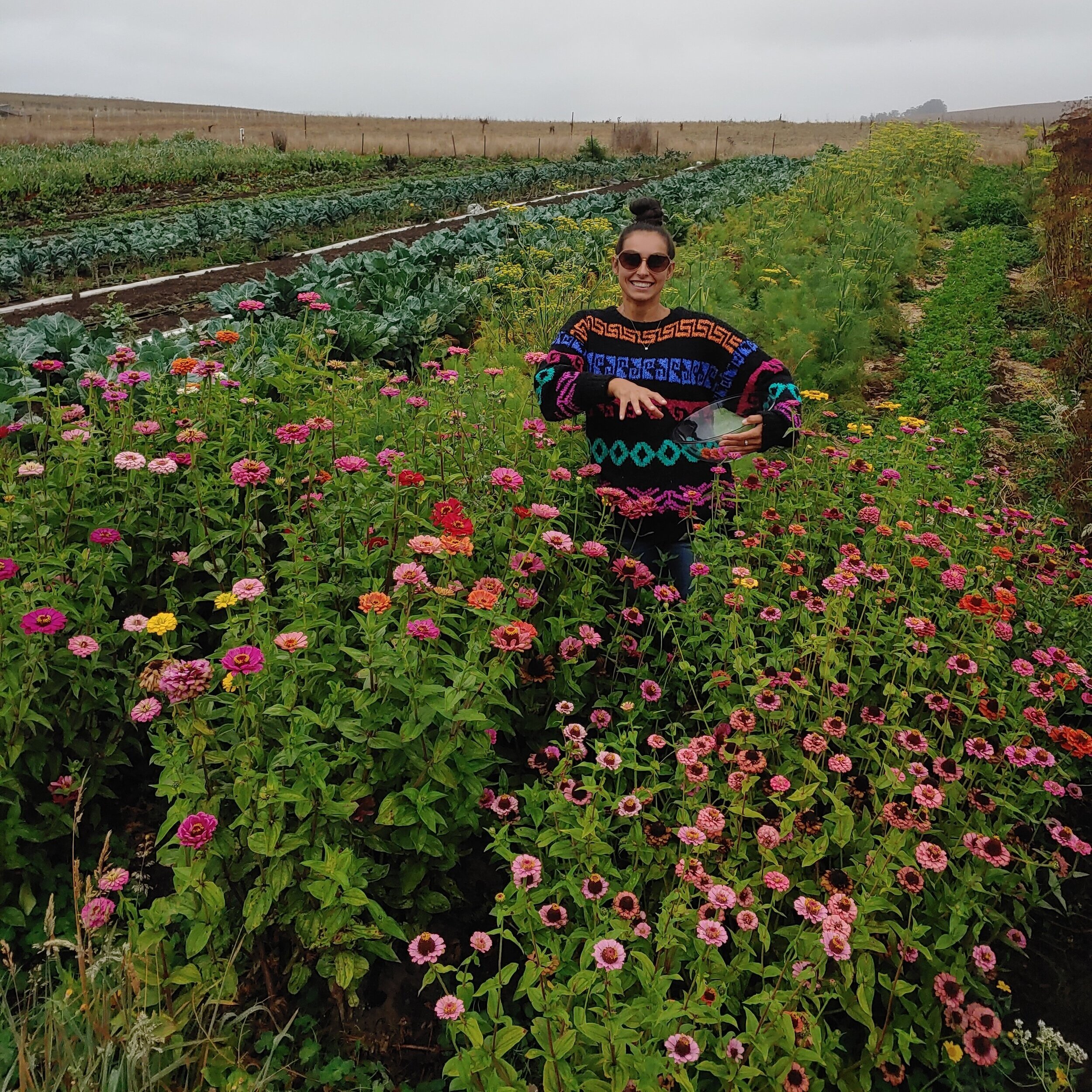The Land
A history of grass
As recent as 15,000 years ago the North American landscape was inhabited by many large mammals or megafauna. Many of these megafauna were herbivores that grazed and browsed grasses, plants and trees. These large herds would move around the grassland and savanna habitats of California creating a rhythm of disturbance by grazing/trampling/soiling much like a lawn gets regularly mowed and fertilized. There was no San Francisco Bay fifteen thousand years ago. Instead, what is now the Bay was then a wide grassy valley teeming with exotic wildlife.
There were herds of mammoth and mastodon, camel and horse. Herds of bison darkened the areas they grazed. There were llamas, elk, tapirs, and maybe even a moose or two. And mingling with these great herbivores were fierce predators such as the short-faced bear and saber-tooth cat, packs of the dire wolf, and prides of the California lion. These predators also helped keep the large herds on the move and let the grasslands rest.
These animals were abundant and much larger than any of their modern relatives, most ran in sizable, diverse herds that played a critical role in the health of the Grassland / Savanna ecosystem for up to and over 2 million years. There are several theories as to why these animals disappeared but one thing is certain, the landscape hasn’t seen such widespread beneficial disturbance since.
Ecosystem dynamics
Ecosystem dynamics are a very complex concepts. There is still so much we have to learn among all the factors at play and that contribute to the formation of our soils and life on the planet. Climate gradients (primarily temperature and moisture) are the primary controllers of structure and function of our soils, while soil parent material (volcanic, metamorphic, or sedimentary rock) and topography have impacts within the confines of climate gradient conditions. All three of these macro-factors (Climate gradient, parent material and topography) influence the effects of annual variations in weather and influence interactions among vegetation composition, natural disturbance regimes of numerous organisms (e.g. small mammals, large herbivores, microbes, fungi, insects) and process (fire, drought, floods, earthquakes, etc.) , and human management. These interactions determine ecosystem processes (Carbon, Nitrogen, other nutrients, water cycles, succession, photosynthesis, etc.), which feed back to affect these interactive factors.
A history of place
This Grassland / Savanna ecosystem supported great biodiversity for millions of years. Perennial grasses co-evolved with a cycle of disturbance from the megafauna herds grazing,trampling,soiling building the fertility of our California soils.
As our megafauna disappeared, humans stepped up to fill a critical role to maintain the health of this abundant ecological climax community.
Indigenous peoples of California started tending the landscape with sophisticated and complex harvesting and management practices. The rich knowledge of how nature works was hard-earned, gained through many generations of learning passed down by elders. This knowledge today is commonly called TEK or ”traditional ecological knowledge."
California Indigenous tribes protected and tended favored plant species and habitats, harvested plant and animal products at carefully worked out frequencies and intensities, and practiced an array of horticultural techniques. Through coppicing, pruning, harrowing, sowing, weeding, burning, digging, thinning, and selective harvesting, they encouraged desired characteristics of individual plants, increased populations of useful plants, and altered the structures and compositions of plant communities. Regular burning of many types of vegetation across the state created better habitat for game, eliminated brush, minimized the potential for catastrophic fires, and encouraged a diversity of food crops.
Tending the Wild
The Spanish - Christian colonization of the 1700s brought in disease, established property rights, indoctrination and enslavement. The Spaniards also brought European annual grasses displacing many of the native bunch grasses in California. The Mexican rule of 1721 introduced livestock and forced labor . The declaration of the State of California in 1850 and the subsequent Gold Rush brought about genocide, Indian assimilation schools, the formation of reservations and the fragmentation of ecological habitats by the enforcement of private property.
As a result Indigenous communities, their language, their cultural knowledge and their land tending practices began to disappear and were replaced with extensive and continuous sheep and cattle grazing, tillage farming and rapid industrialization.
Though the State of California, in 2019, finally apologized for the genocide carried out against its Indigenous residents, much healing, remembering and reparations still have to take place.
keystone species
- A species whose presence and role within an ecosystem has a disproportionate effect on other organisms within the system.-
A keystone species is often, but not always, a dominant predator whose removal allows a prey population to explode and often decreases overall bio-diversity and ecological health.
Between 1823 and 1841 there was the less known “California fur rush” which together with the depredation permits given out during the early 1910s decimated the beaver population responsible for much of the health of the California watersheds.
By the late 1920 keystone predators like the Grey Wolves were extirpated from the California landscape as well. Wolves are integral in regulating prey populations like deer and elk to help balance overgrazing pressure around water sources and Grassland / Savanna environments in general.
California’s environment was once again missing it’s critical components of human tending, fire and animal disturbance to nurture a healthy climax ecology.
Modern Agriculture
“We are currently in a situation where the two primary modes of interacting with the range lands and savannas of the world, both with the best intentions; have mostly led to further destruction and simplification of the commons.
We have inherited a paradigm where modern agriculture has become incredibly efficient at producing food, yet it has decreased biodiversity and stressed natural resources more than any other human activity on the planet and the conservation notion of “leaving it alone” in the absence of the biological communities necessary to stimulate the ecosystem has often done similar.
It is more than obvious that human civilization is less connected to the natural world than ever before and we are neither able to fully acknowledge the problem nor understand our role in it. “
Source: Holistic Ag
Today the grassland habitats are fractured and the symbiotic relationship between the land and tending is broken. Our culture of place is missing and our economic evaluation models do not reflect the true value of land and people. Yet, with all this said there is tremendous hope and great examples of what is possible in all parts of the world.
The future
Our environment shapes our culture and our culture shapes the environment. The future is a dialogue. A dialogue between food, ecology and culture.
Here at True Grass Farms we listen closely to the natural cycles of the land, learn from our history and dedicate ourselves to feed our community. We aim to mimic the movement of the wild herds of the Pleistocene. We want to re-establish a healthy relationship where humans play a beneficial and integral role to the ecosystem. Where wilderness and food production zones are one. We are land tenders that work in conjunction with animals to nurture the biological diversity and productivity of our California Coastal prairie and Oak Savanna. We believe hospitality to be sacred. We cherish the cultural health of our community and of our soils. We are dedicated to the land.


















